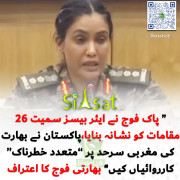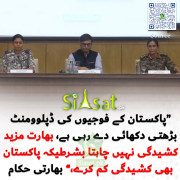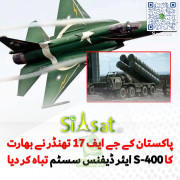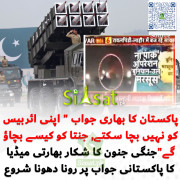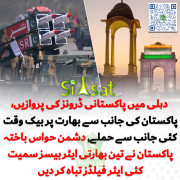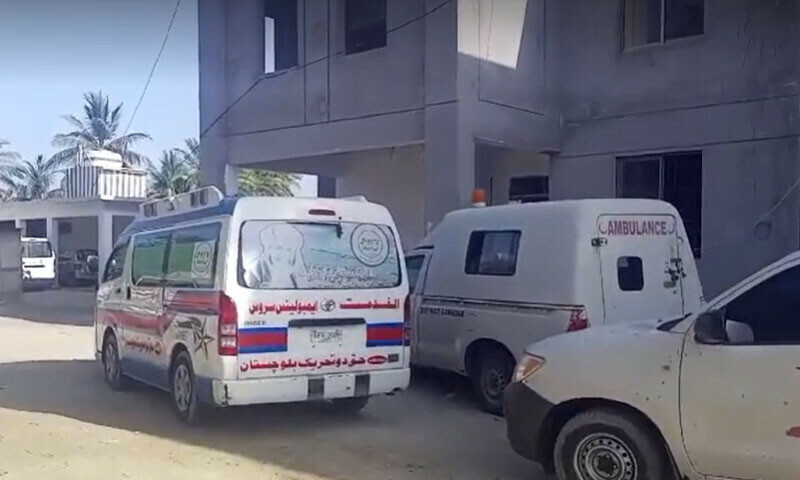Adeel
Founder
KARACHI: Corruption in Pakistan has surged by whopping 400 percent in the last 3 years, said National Corruption Perception Survey 2009 carried out by Transparency International.
The National Corruption Perception Survey 2009 (NCPS 2009) indicates that the overall Corruption in 2002 has increased from Rs 45 Billion to Rs 195 Billion in 2009. Police and Power maintained their ranking as the top two most corrupt sectors.
There has been remarkable improvement in Judiciary. As compared to 2006 when it was ranked 3rd most corrupt sector, in 2009 Judiciary is ranked 7th.The Survey model prepared by TI in 2002 was used, and 24 page questionnaire was repeated to carry out surveys from 5,200 respondents from all the four provinces. The physical survey commenced in February 2009 and completed in April 2009.
Major Findings of Pakistan National Corruption Perception Survey 2009 are:
Police, Power, Health and Land are the most corrupt departments, and Judiciary, Customs & Taxation have improved their ranking since 2006.
In response to the query on comparing civilian and military government, respondents said civilian government were more corrupt.
The Present District Government System has been rated as more corrupt by 66.48% respondents, than the previous District Government System.
Majority of (60%) Respondents feel that Government /Armed forces should not be involved in commercial activities.
Majority of respondants wants National Accountability Bureau or any equivalent Anti Corruption Agency should be an independent body under the control of Supreme Judicial Council.
The three main reasons of corruption in view of our respondents were being, lack of Accountability, Lack of transparency & Discretionary Power.
The three measures suggested for combating corruption are Accountability of public office holders, Judicial process to be streamlined & Appointing on merit .
To the question In your opinion has media played a positive role in combating corruption, 77% said yes.
Respondents ranking of four most viewed TV Channel are Geo, ARY, Express and Aaj. Four News paper in readership ranking are Jang, Nawa-e-Waqat, Dawn and Mashriq.
Assuming that there are 21.5 million House Holds ( 8 persons per house) in the Country, average bribery expenditure being Rs.9,428 per household, almost Rs.195 Billion is being cost of petty corruption at the lowest level. In NCPS 2006 it was Rs 45 Billion.
Motor way police system has been said by more than 82% respondents to have reduced corruption, and 84% have recommended to be implemented in all cities of Pakistan.
The main feature of the Pakistan National Corruption Perception Survey (NCPS)2009 and ranking in 2006 and 2002 Surveys are detailed below
The NCPS 2009 shows that the quantum per act of bribe is highest in Tendering & Procurement. The combined quantum of bribe per act in 9 sectors is Rs. 74,131, whereas in tendering in a single act the bribe is 71869.
Transparency International Pakistan also conducted survey of the Federal Government Departments on the compliance of the Public Procurement Rules 2004.
The Armed Forces. i.e. DP Division, MES and DHA are the largest sector of violators of the Procurement Rules 2004, issued by Public Procurement Regulatory Authority under PPRA Ordinance 2002. The other sector of violators are the regulatory authorities themselves. PPRA itself is not performing its statutory obligations of monitoring the application of rules, and stated to be have given illegal exemptions from application of Procurement Rules 2004. SECP, privatization ministry, State Bank of Pakistan refuses to be governed under PPRA Ordinance 2002. The correspondence with these departments are available on Transparency International Pakistan website . To curb manipulations and collusion, following Transparency Clauses are included in the Public Procurement Rules 2004. These clauses are deterrent for higher than prevailing market rates/ terms of award of contracts.
The NCP survey 2009 results confirm that Pakistan has Laws, but not the Rule of Law.
The National Corruption Perception Survey 2009 (NCPS 2009) indicates that the overall Corruption in 2002 has increased from Rs 45 Billion to Rs 195 Billion in 2009. Police and Power maintained their ranking as the top two most corrupt sectors.
There has been remarkable improvement in Judiciary. As compared to 2006 when it was ranked 3rd most corrupt sector, in 2009 Judiciary is ranked 7th.The Survey model prepared by TI in 2002 was used, and 24 page questionnaire was repeated to carry out surveys from 5,200 respondents from all the four provinces. The physical survey commenced in February 2009 and completed in April 2009.
Major Findings of Pakistan National Corruption Perception Survey 2009 are:
Police, Power, Health and Land are the most corrupt departments, and Judiciary, Customs & Taxation have improved their ranking since 2006.
In response to the query on comparing civilian and military government, respondents said civilian government were more corrupt.
The Present District Government System has been rated as more corrupt by 66.48% respondents, than the previous District Government System.
Majority of (60%) Respondents feel that Government /Armed forces should not be involved in commercial activities.
Majority of respondants wants National Accountability Bureau or any equivalent Anti Corruption Agency should be an independent body under the control of Supreme Judicial Council.
The three main reasons of corruption in view of our respondents were being, lack of Accountability, Lack of transparency & Discretionary Power.
The three measures suggested for combating corruption are Accountability of public office holders, Judicial process to be streamlined & Appointing on merit .
To the question In your opinion has media played a positive role in combating corruption, 77% said yes.
Respondents ranking of four most viewed TV Channel are Geo, ARY, Express and Aaj. Four News paper in readership ranking are Jang, Nawa-e-Waqat, Dawn and Mashriq.
Assuming that there are 21.5 million House Holds ( 8 persons per house) in the Country, average bribery expenditure being Rs.9,428 per household, almost Rs.195 Billion is being cost of petty corruption at the lowest level. In NCPS 2006 it was Rs 45 Billion.
Motor way police system has been said by more than 82% respondents to have reduced corruption, and 84% have recommended to be implemented in all cities of Pakistan.
The main feature of the Pakistan National Corruption Perception Survey (NCPS)2009 and ranking in 2006 and 2002 Surveys are detailed below
The NCPS 2009 shows that the quantum per act of bribe is highest in Tendering & Procurement. The combined quantum of bribe per act in 9 sectors is Rs. 74,131, whereas in tendering in a single act the bribe is 71869.
Transparency International Pakistan also conducted survey of the Federal Government Departments on the compliance of the Public Procurement Rules 2004.
The Armed Forces. i.e. DP Division, MES and DHA are the largest sector of violators of the Procurement Rules 2004, issued by Public Procurement Regulatory Authority under PPRA Ordinance 2002. The other sector of violators are the regulatory authorities themselves. PPRA itself is not performing its statutory obligations of monitoring the application of rules, and stated to be have given illegal exemptions from application of Procurement Rules 2004. SECP, privatization ministry, State Bank of Pakistan refuses to be governed under PPRA Ordinance 2002. The correspondence with these departments are available on Transparency International Pakistan website . To curb manipulations and collusion, following Transparency Clauses are included in the Public Procurement Rules 2004. These clauses are deterrent for higher than prevailing market rates/ terms of award of contracts.
The NCP survey 2009 results confirm that Pakistan has Laws, but not the Rule of Law.

